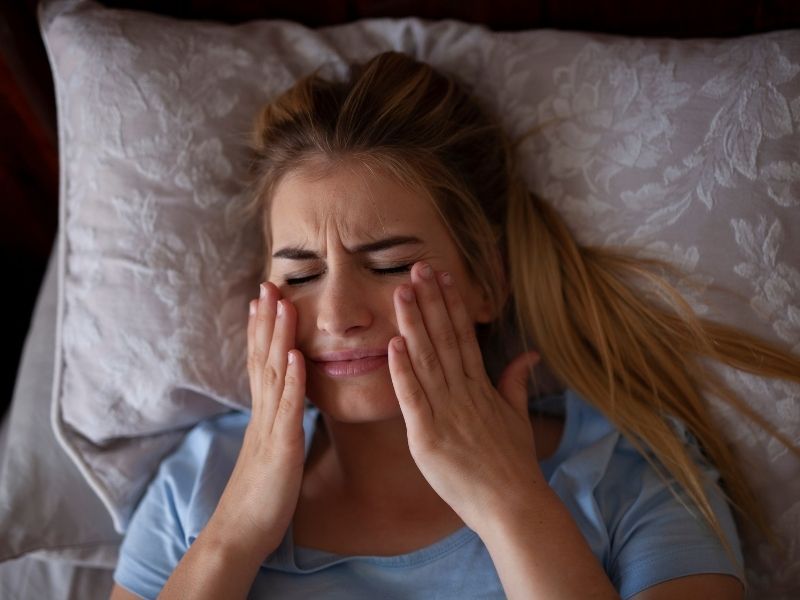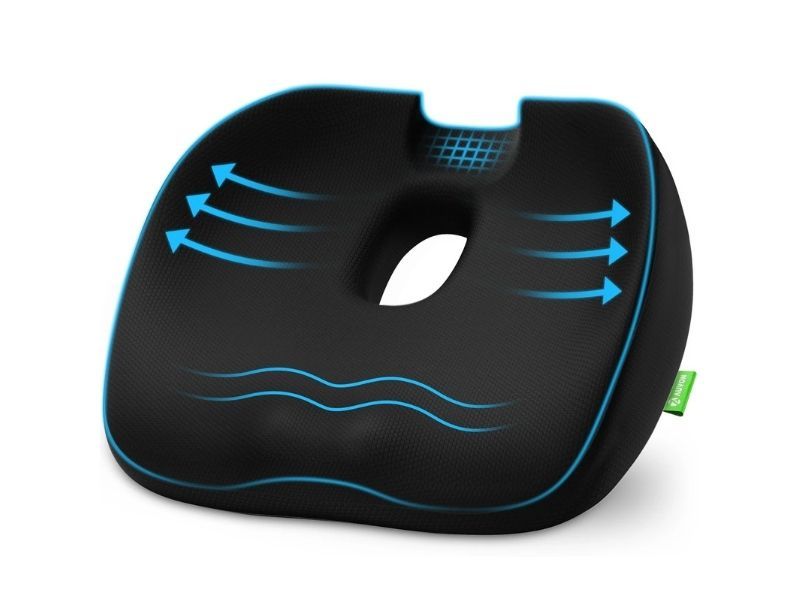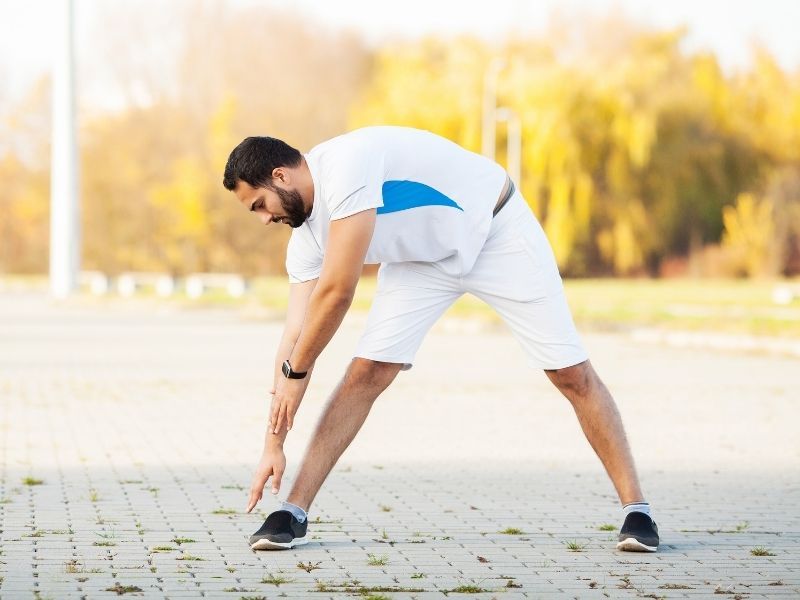TMJ Massage Therapy Techniques For Pain Relief

Table of Contents
How Massage Can Help TMJ Pain
Massage therapy can be helpful as a part of a larger TMJ treatment strategy. TMJ pain is often multi-factorial, so proper expectations should be set regarding what massage techniques can realistically accomplish.
Muscles that close the jaw such as the temporalis are commonly associated with tension headaches. Individuals that experience teeth grinding or clenching at night are likely to have increased tension and muscle fatigue that can contribute to pain.
A properly trained massage therapist can assist with these techniques.
How Does The Temporomandibular Joint Work?

These highly complex joints consist of the connection between the bones on the side of the head called the temporal bones, and the mandible (jaw bone).
The joints, along with the connecting muscles, allow the jaw to move up and down, side to side, and forward and backward.
When these joints in proper alignment and the muscles are relatively balanced, normal motion is accomplished during activities like yawning, chewing, and swallowing.
When disharmony exists, temporomandibular joint disorders (TMD) can emerge.
Contributing Factors For TMD And Jaw Pain
TMJ disorders are a fairly complex topic, mainly because there are many contributing factors.
For example, experts have discovered various psychological, genetic, and nervous system inputs that can trigger or exacerbate TMJ disorders.
When it comes to structural inputs, the neck should not be overlooked when it comes to temporomandibular joint issues. Due to the close relationship between the position of the head, neck, and jaw, it’s no wonder many individuals present with a wide variety of symptoms such as neck pain, headaches, pressure over or behind the eyes, and more!
TMJ Muscles
There are many muscles that influence the movement and position of the TMJ joints, but the primary ones that tend to produce the best results with released at the following:
Temporalis Muscle

The temporalis muscles can be found on the side of the head, from the temporal bones, and insert into the coronoid process on the mandible.
This muscle contributes to closing the jaw, although not as powerful as the masseter. The temporalis is commonly associated headaches since we tend to rub these muscles for quick relief.
Masseter Muscle

The masseter muscle is arguably the most powerful muscle in the body. These powerful closers of the jaw are often the primary candidate for TMJ massage and treatments, including botox injections.
Pterygoid Muscle


The pterygoid muscles are often underemphasized jaw muscles, usually due to the challenge in directly addressing them.
The lateral pterygoid depresses the jaw and opens it. The medial pterygoid elevates the jaw and laterally shifts it.
Both of these muscles can be massaged both externally and internally to some degree.
TMJ Massage In-Mouth Techniques
While a portion of the muscles can be accessed easily at the side of the face and head, the attachments of the masseter, temporalis, and pterygoids in particular can only be addressed from inside the mouth.
Arguably these are the most important fibers, especially the medial pterygoid. Massaging these muscles is relatively simple, however its important to be mindful of the delicate tissues in the mouth.
In addition, proper sanitation is important. Proper hand-washing and use of a latex or vinyl glove is recommended.
Intra-Oral Masseter and Temporalis Release
The masseter muscle is the first to locate and massage. It can be found by placing the thumb between the clenched teeth and cheek.
This muscle can be massaged with a pinch-style technique using the index finger and thumb. Its important to avoid using excess pressure in this area. Even though the masseter is a dense muscle, there are salivary ducts in this area that you don’t want to irritate or damage.
Intra-Oral Pterygoid Release
The pterygoids (medial and lateral) can be addressed from inside the mouth. While its not always possible to make contact with these tissues on everyone right away, they can be worked into over time.
The key to finding them is placing the index finger next to the upper row of teeth, and sliding straight back and up toward the ear. A slight lateral shift of the jaw toward that side will open up a small pocket to allow the finger further access.
There will be multiple tender spots in this area, and the pterygoid will be the most.
TMJ Trigger Points
Trigger points are a commonly discussed phenomenon when it comes to chronic musculoskeletal pain.
While these tender points are not fully understood, we should be on the lookout for them, especially when they refer sensations to other areas when pressed on. This topic will be covered more in another post regarding specific techniques.
Self Massage Techniques
Self massage is an excellent way to follow up on visits with a professional massage therapist. The techniques shown above can be done on your own, and there are additional TMJ massage tools which can be very helpful, especially if you don’t have the finger strength or endurance.
Stretching and exercises for the jaw muscles can also be very helpful as an adjunct to TMJ massage.
Conclusion
Treating TMJ with massage is a simple conservative approach that can be immensely helpful for those suffering from chronic pain, but should be seen as a piece of the overall strategy for overcoming jaw pain.
*TMJ massage therapy should be performed by a qualified professional that is trained in these techniques. As always, be safe!
Sam Visnic
I’ve spent my life studying the fundamental aspects of human health with a focus on movement and clinical massage therapy. In a world of specialists, surgical procedures, drugs and quick fix remedies, I’m committed to finding and developing strategies that help people stuck at the “gap”. Over the last 20 years I’ve studied dozens of systems and methodologies for uncovering the root cause of aches and pains, along with postural and movement issues. Pain science, the art and science of hands-on soft tissue massage techniques, myofascial release, and coaching movement is essential in my practice. Integrating different methods but above all deciphering WHEN to use different techniques with different people and situations, along with integration of movements that people want to be able to do again is the key to long term success with my incredible track record with clients. Understanding the various elements that contribute to conditions and the power of communication and education makes my Release Muscle Therapy program separate from other hands-on therapy approaches.
Blogs You May Be Interested In
Categories
-
Deep Gluteal Pain Syndrome
-
Deltoids
-
Fallbrook
-
Foam Rolling
-
Glutes
-
Hamstrings
-
Hypnosis For Pain
-
Lats
-
Levator Scapulae
-
Lifestyle
-
Massage Therapy
-
Mobility
-
Movement and Exercise
-
Murrieta
-
Muscles
-
Nutrition
-
Obliques
-
Pain
-
Pectorals
-
Piriformis
-
Plantar Fasciitis
-
Product Review
-
Psoas
-
Quadratus Lumborum
-
Quadriceps
-
Rhomboids
-
Serratus Anterior
-
SI Joint
-
Sternocleidomastoid
-
Stretching
-
Subscapularis
-
Temecula
-
TMJ
-
Trapezius
-
Uncategorized
















